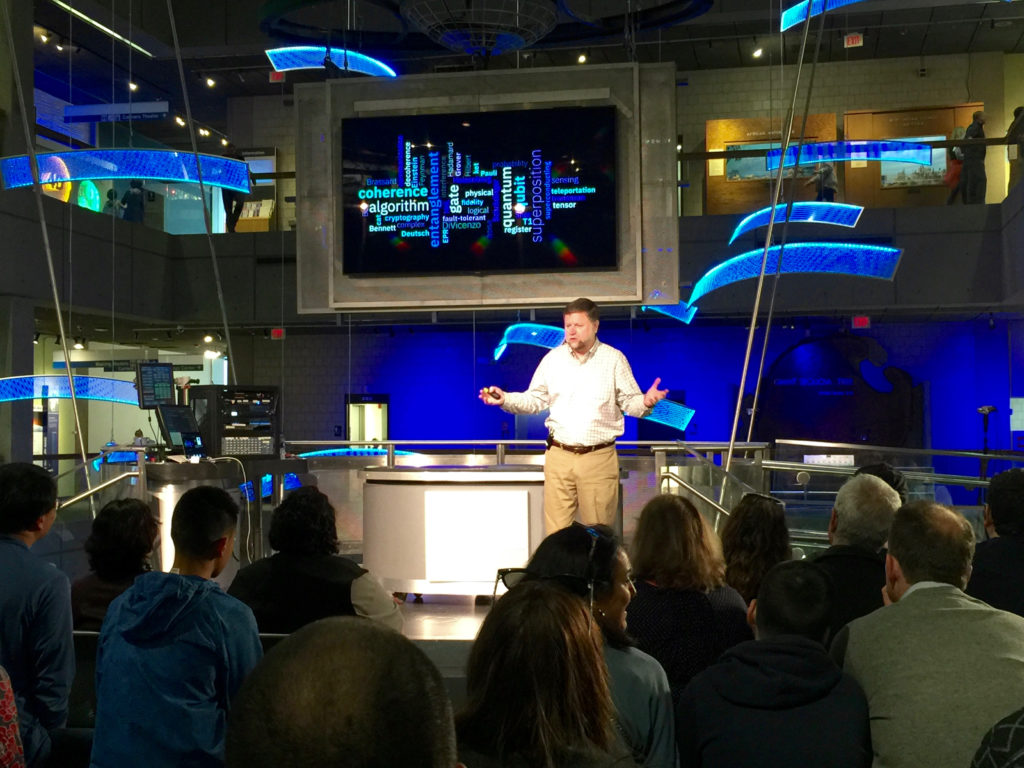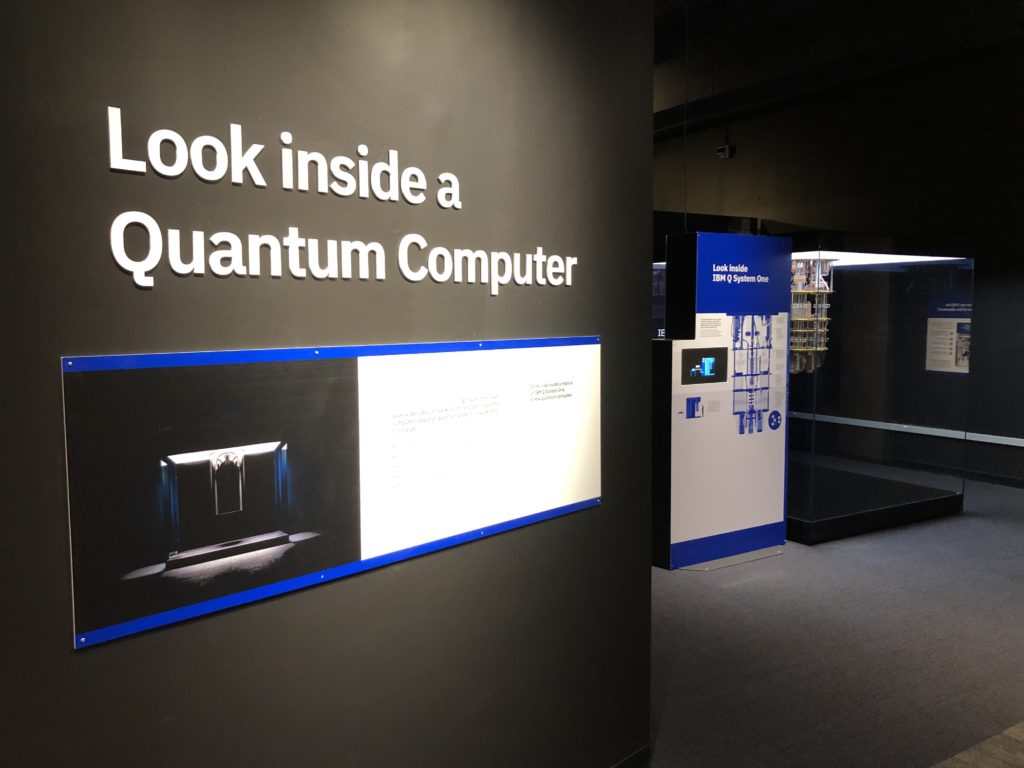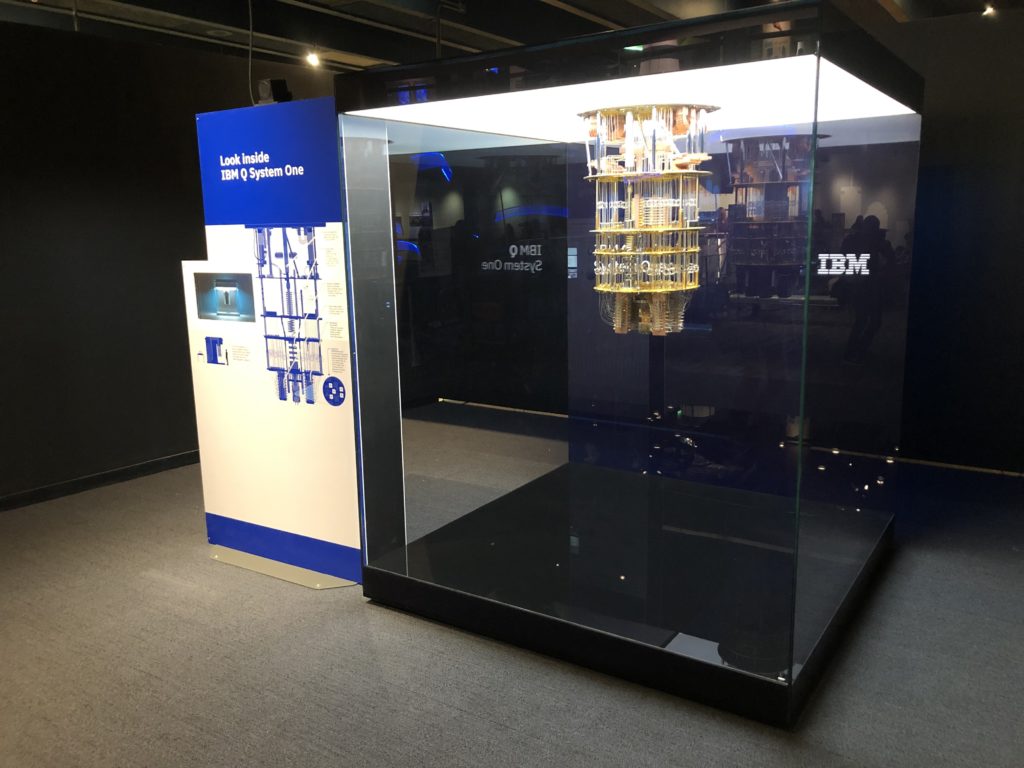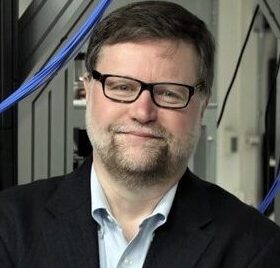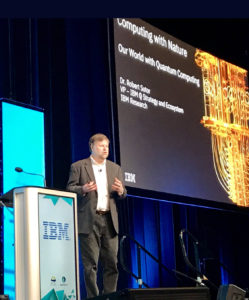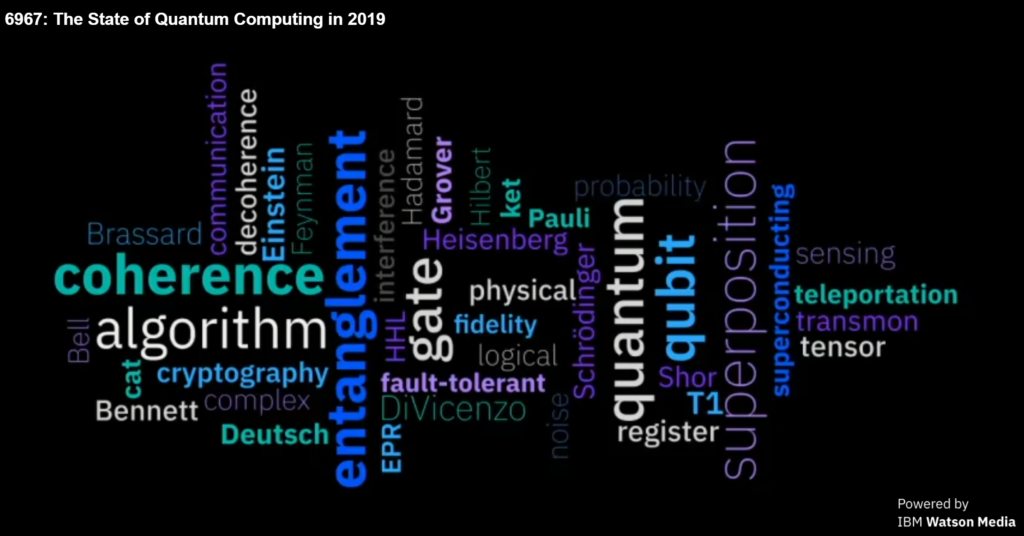It was a beautiful spring day in Boston last Saturday, April 6, when my IBM Q colleague Melissa Turesky and I headed to the Museum of Science on the Charles River. It was a special event, “NanoDays with a Quantum Leap,” and I spoke about the IBM Q quantum computing program and how people could start coding it today.
I was most happy to see how many young people were at the museum and participating in the NanoDays events. A lot of what we are doing now with quantum computing is education and I hope that exhibits like this will encourage girls and boys to learn more about the area. I’d love to have someone tell me in 10 years that the museum exhibit inspired them to pursue a quantum-related STEM career.
Since 2016, over 100,000 people have used the IBM Q Experience and they have run over 9.5M executions. A 50 qubit model of the IBM Q System One will be in residence as part of the quantum exhibit until the end of May.
